AP Biology Scavenger Hunt K Strategist
K and r are two extremes for a range of population growth strategies, no one strategy is better or best. Identify the characteristics associated with K selected and r selected species. Volunteer here: https://www.khanacademy.org/contribute. Created by Khan Academy. Questions Tips & Thanks Want to join the conversation? Sort by: Top Voted
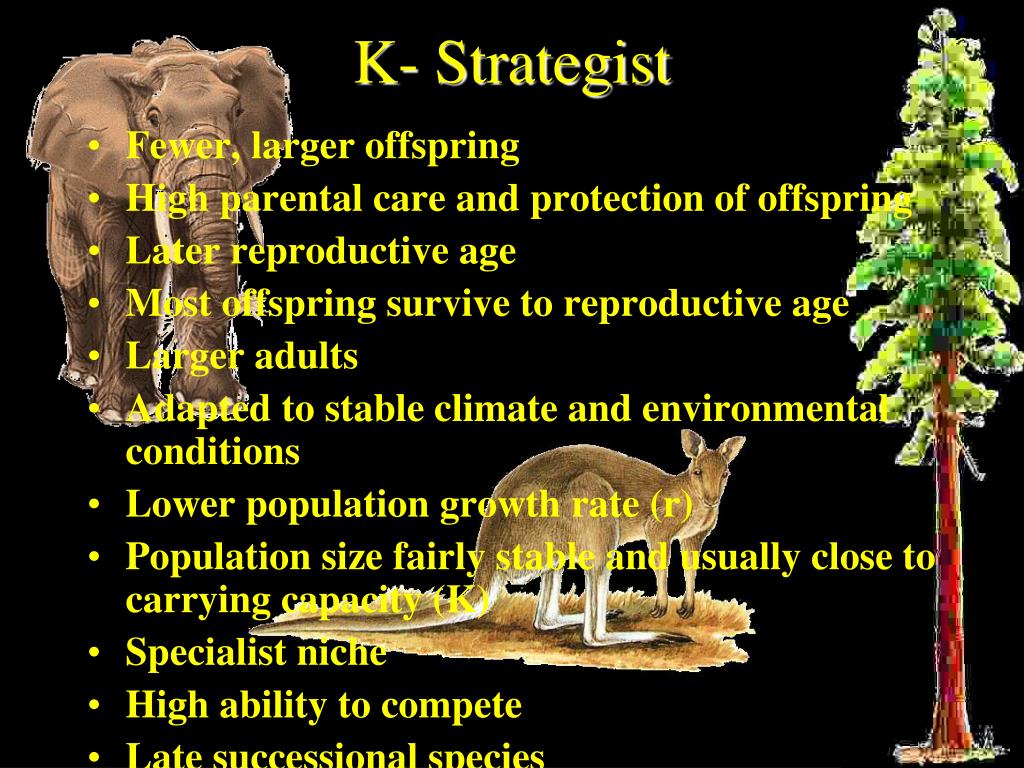
PPT Population Ecology Chapters 9 Miller 14 th Edition PowerPoint Presentation ID7085327
K-strategists have stable populations that are close to K. There is nothing to be gained from a high r. The species will benefit most by a close adaptation to the conditions of its environment. Typically, K-strategists share these qualities: They are usually found in stable habitats. Most of the species in a mature forest will be K-strategists.

Are Rabbits KSelected Or RSelected? Best 7 Answer
Generalist vs. Specialist While k-selected species are generally thought of as specialists due to their reproductive behaviors, some animals also exhibit generalist traits when it comes to their diet or habitat. For example, humans are considered k-selected animals, but we are also generalists when it comes to our diet.
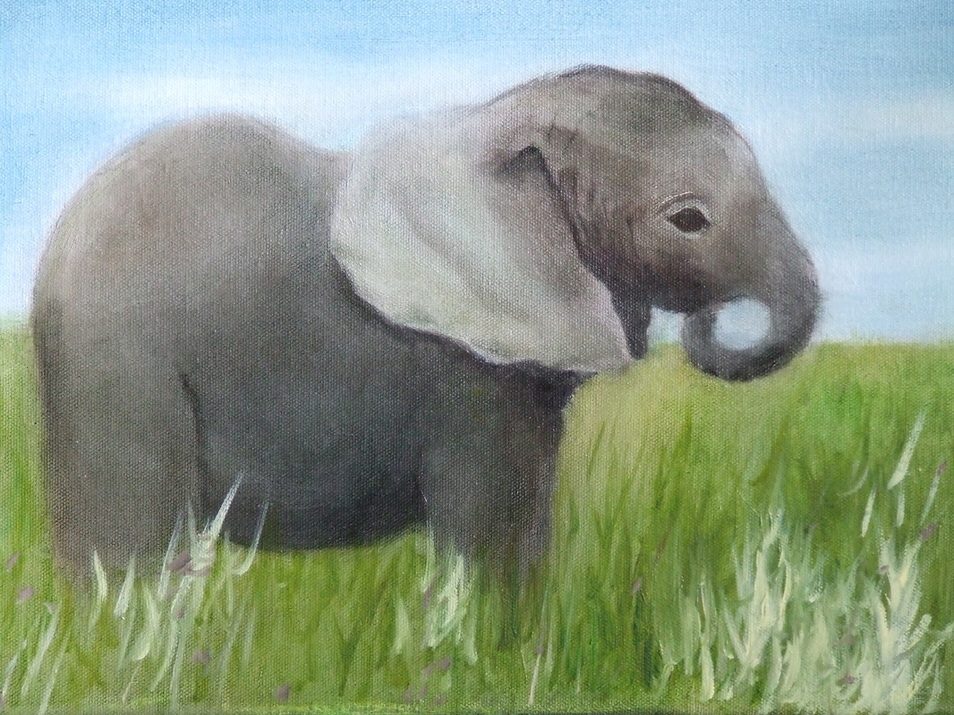
Biological Terms AP Biology Summer Assignment
The terms r-selection and K-selection are used by ecologists to describe the growth and reproduction strategies of organisms r-selected species have a high growth rate but low survivability ("cheap" offspring) K-selected species have a low growth rate but high survivability ("expensive" offspring) r-selection
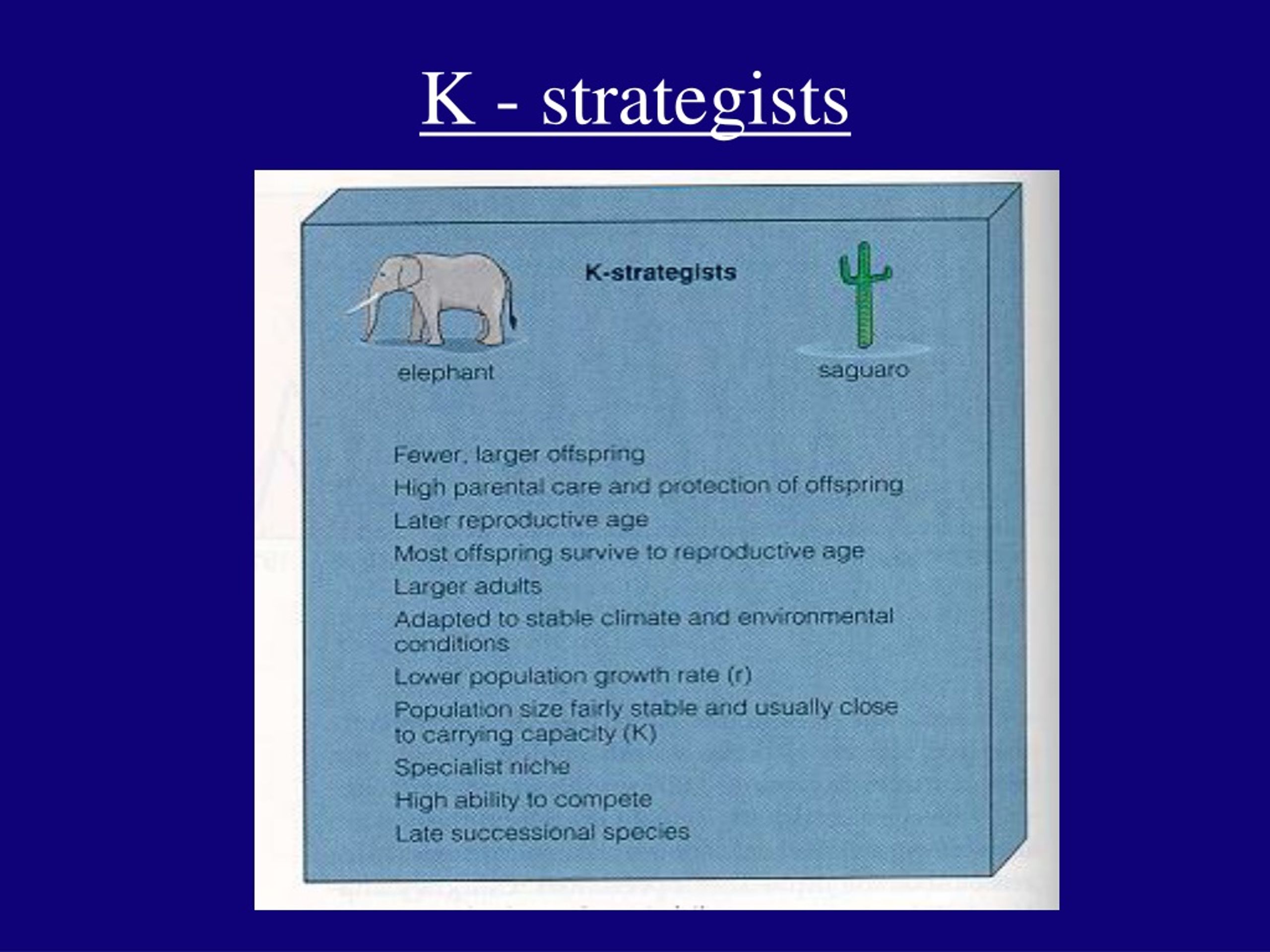
PPT Population Dynamics PowerPoint Presentation, free download ID259317
In ecology, r/K selection theory relates to the selection of combinations of traits in an organism that trade off between quantity and quality of offspring. The focus on either an increased quantity of offspring at the expense of individual parental investment of r -strategists, or on a reduced quantity of offspring with a corresponding.

Difference Between r Strategist and K Strategist Compare the Difference Between Similar Terms
K-selected species, also calledK-strategist, species whose populations fluctuate at or near the carrying capacity (K) of the environment in which they reside. K-selected species possess relatively stable populations and tend to produce relatively low numbers of offspring; however, individual offspring tend to be quite large with high probability of survival in comparison with r-selected species.

PPT AP Environmental Science Population Dynamics, Carrying Capacity and Conservation Biology
3. Conduct classroom activities to help students identify K-strategists. You can give students a list of animals and ask them to research which ones are K-strategists. Alternatively, you can show them pictures of different animals and ask them to identify which ones are K-strategists. 4. Use multimedia tools such as videos, images, and.

PPT Population Ecology Chapters 9 Miller 14 th Edition PowerPoint Presentation ID7085327
Category: Science & Tech Also called: K-strategist species carrying capacity See all related content → K-selected species, species whose populations fluctuate at or near the carrying capacity ( K) of the environment in which they reside.

Are Primates KSelected Or RSelected? Trust The Answer
There are many examples of K-selected species. Whales and elephants are large-bodied mammalian K-selected species. Some trees (such as oaks) and reptiles (such as alligators) are also K-selected.

PPT Chapter 4 Population Ecology PowerPoint Presentation, free download ID7026772
The young tend to be altricial (immature, requiring extensive care). You can see r- and K-selected strategies clearly by looking at different organisms within a phylogenetic group, such as the mammals. For example, elephants are highly K-selected, whereas mice are much more r-selected. Among the fishes, most, like the salmon, are r-selected.
.jpg)
Startups as an rstrategist species — Gavrilo Bozovic
Since r-strategist birth rates are so much higher than K-strategist birth rates, it follows that the vast majority of vertebrate individuals are r-strategists. So even if invertebrate r-strategists turned out to be insentient, r-strategists would still comprise the vast majority of sentient individuals born into the world.

Ecological Principles / Populations Ecology
Exploitation of Marine Mammals: r-Selection of K-Strategists? DOI: Authors: James A. Estes Abstract The importance of marine mammals as predators to the organization of marine communities is.

Exploring The Reproductive Strategies Of Great White Sharks
Whereas K-strategists perform well at densities close to the carrying capacity, the r-strategists do not. The properties of r- and K-selected microbial species given in Table 1 can be used both for selection of desired species (more details below) and for diagnostic purposes (Salvesen et al., 1999; Salvesen and Vadstein, 2000).
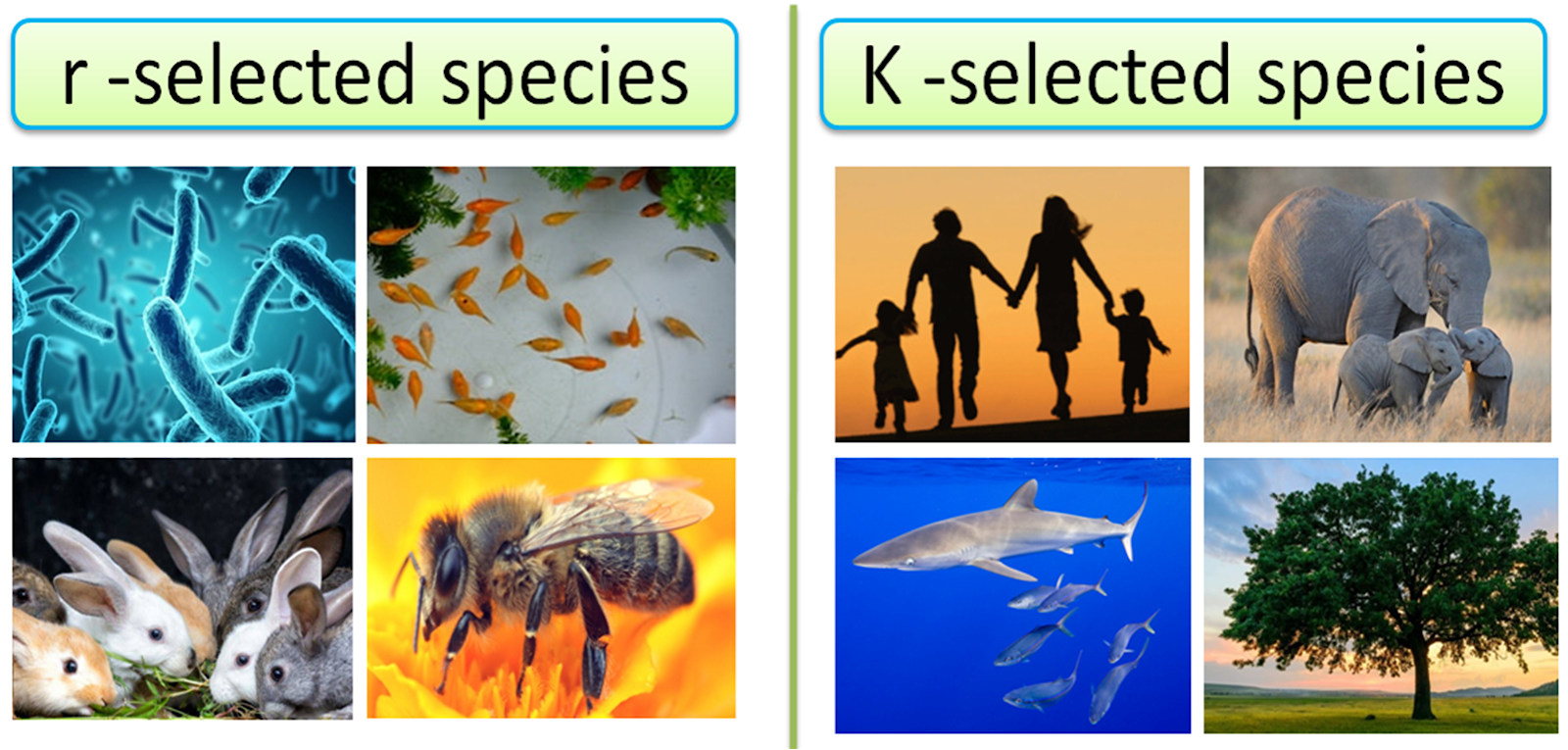
Difference between r and K Selection
Typical K-selected organisms are elephants, and humans. The table below summarizes some of the differences between r-organisms and K-organisms. It is not surprising that many organisms cannot be categorized neatly into this r vs. K scheme.
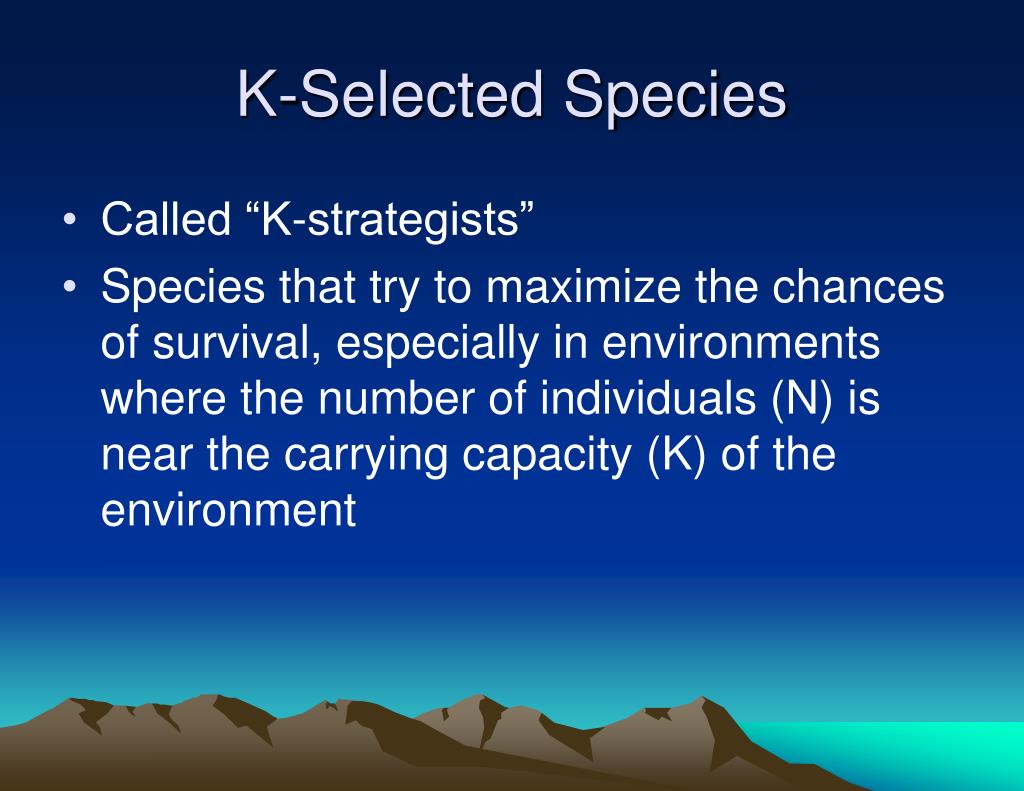
PPT Population Ecology PowerPoint Presentation, free download ID5592518
K-Strategists. Species with life history characteristics making them well suited for population stability and stable environments ("K" is an expression of carrying capacity of the environment). K-selected species represent an extreme on a continuum of life history characteristics, with r-selected species at the other end of the continuum.

PPT Population Ecology PowerPoint Presentation, free download ID5592518
Common examples of k-strategists species include humans, lions and whales. R-strategists R-strategists "live" near the line of exponential growth . These organisms are nowhere near the carrying capacity, and can therefore afford to grow their population. In fact, they to.